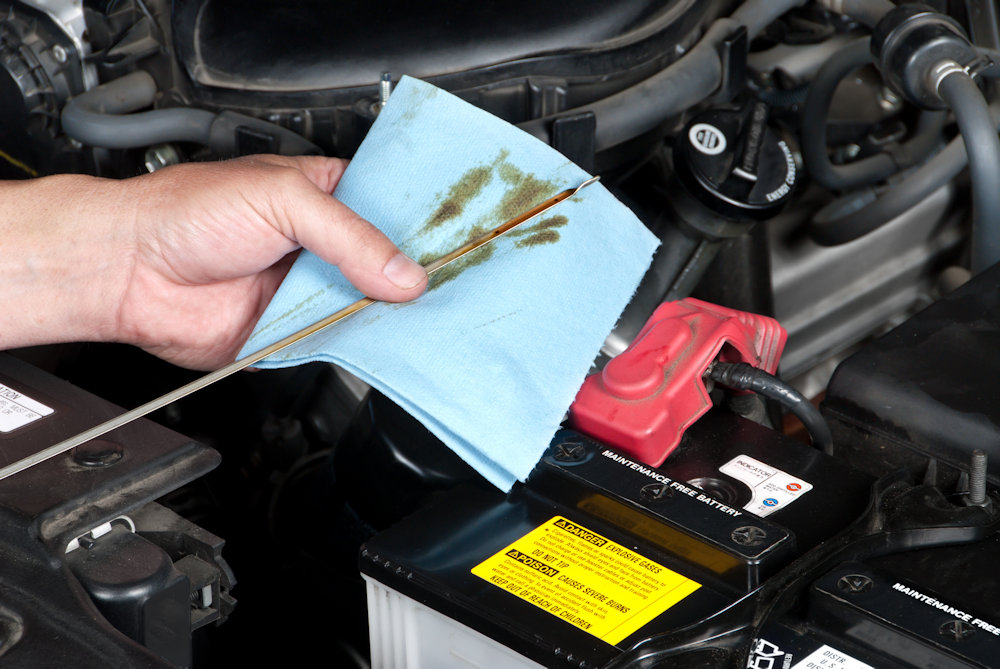Vehicle fluids include brake fluid, engine oil, coolant, power steering fluid, windshield washer fluid, transmission fluid and battery fluid. Fluid level information and the location of each fluid reservoir can be found in the owner’s manual for your particular vehicle.
Engine oil should be checked each time the vehicle is refueled (i.e. each time you go to the gas station). Most engines, but not all, have a dipstick to indicate the oil level. Typically the handle is yellow. Follow these steps to check the oil:
- Turn the engine off.
- Remove the dipstick.
- Wipe off the end of the dipstick with a rag or paper towel.
- Put the dipstick back in.
- Take it out to look at the level at the tip.
- The stick will have marks on it. The “add” mark typically indicates one quart low. If an engine is leaking oil then the price of repairs can vary depending on which repair is needed and the make and model of the vehicle.
Most other fluids will either have a dipstick, similar to engine oil, or a transparent reservoir. If the fluid is in a transparent reservoir, then there will be marks on the reservoir that indicate the acceptable level of that particular fluid. The major exceptions are the battery fluid and transmission fluid. The battery may or may not be transparent enough to see the fluid and it won’t have a dipstick. The transmission fluid may or may not have a dipstick and it will not be in a transparent reservoir.
The following items are important to remember when checking other fluids:
- Low brake fluid indicates a problem that should be checked by an experienced mechanic.
- Never open the cooling system (radiator cap) if the engine is hot!
- A low coolant level indicates a possible leak which needs to be checked by a mechanic. Adding more coolant will not resolve an overheating problem with the engine.
- Low power steering fluid is an indication of a leak that should be investigated.
- If you live or drive in cold climates, then be sure to add antifreeze to the windshield washer fluid.
The most common interval for changing oil on modern vehicles is every 5,000 miles. Refer to the owner’s manual for your specific vehicle and for fluids other than the oil. The owner’s manual will have a maintenance chart that every vehicle owner can use to be sure the correct maintenance is performed at the right time.
How to Check the Oil and Other Fluids is an original article from Crawford’s Auto Repair. Copyright © 2014, Jeff Crawford. Permission is granted to republish this article (text only) for personal or commercial use as long as the content, citation, and copyright notice all remain intact and unchanged. There must be an active “follow” link to CrawfordsAutoService.com. Any image seen with this article is the property of it’s respective author and requires it’s own permission. For additional information see Vehicle Fluids Maintenance.
How to Check the Oil and Other Fluids is licensed under a Creative Commons Attribution-NoDerivatives 4.0 International License.
